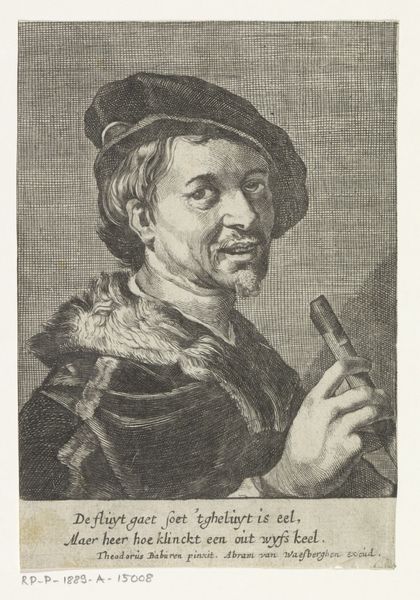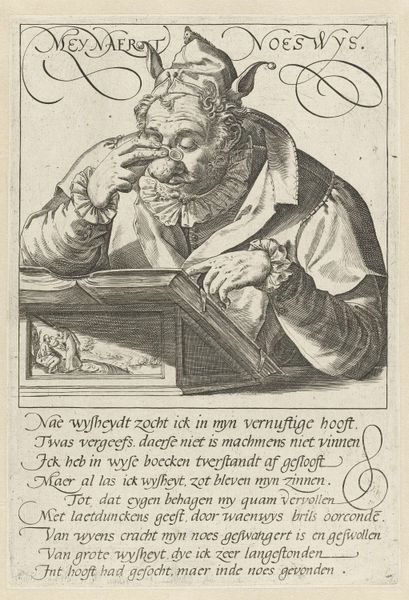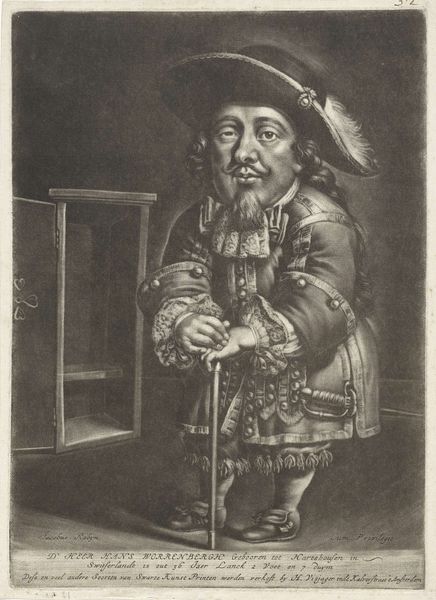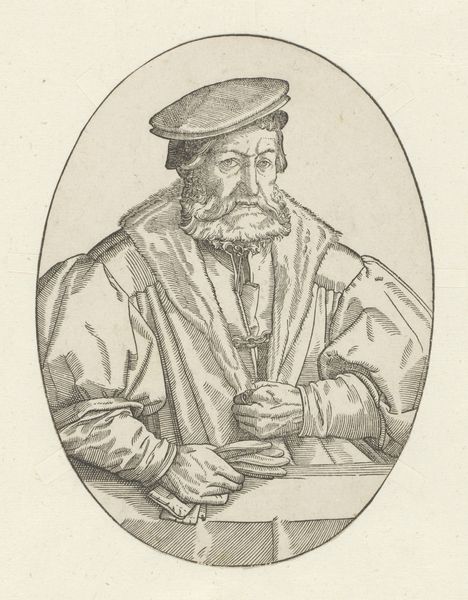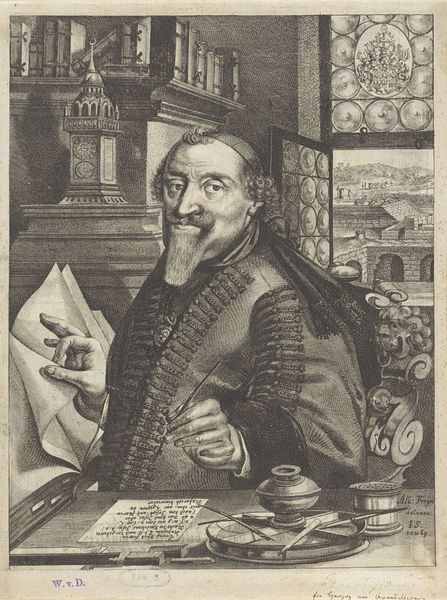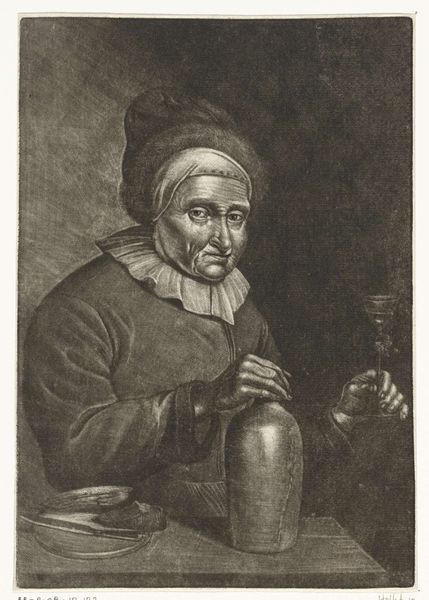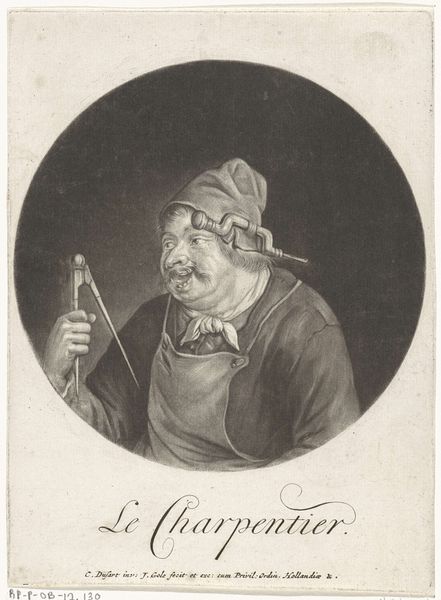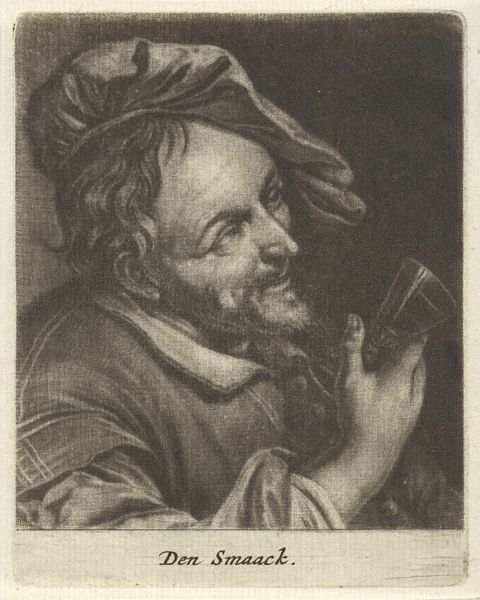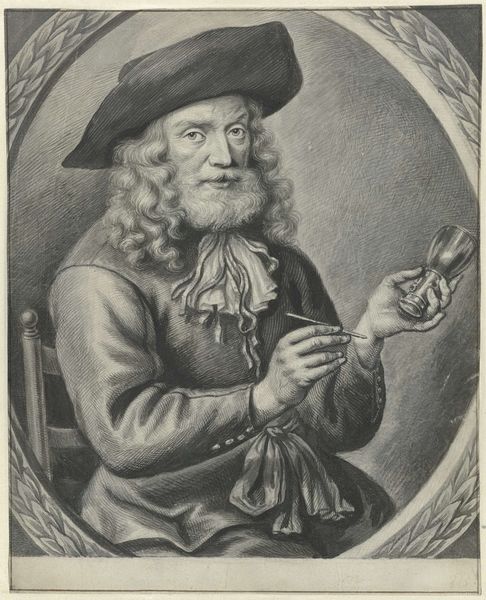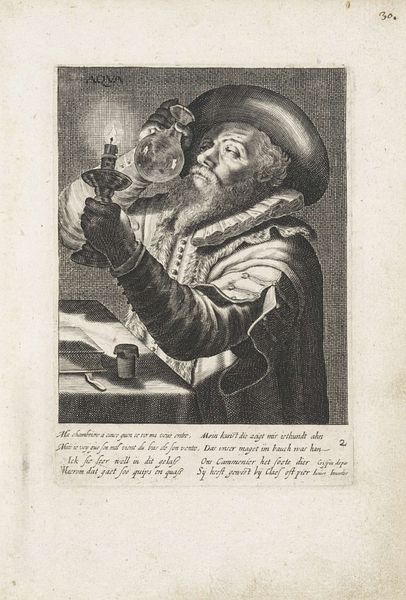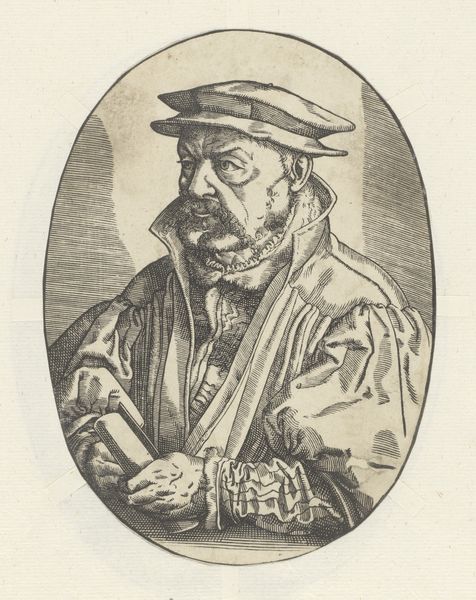
etching
#
portrait
#
facial expression drawing
#
baroque
#
etching
#
caricature
#
caricature
#
portrait drawing
#
genre-painting
#
portrait art
Dimensions: height 258 mm, width 190 mm
Copyright: Rijks Museum: Open Domain
Editor: Here we have "De Smaak," or "The Taste," an etching dating back to 1683-1684. The Rijksmuseum attributes this work to an anonymous artist. I’m struck by how it feels almost like a staged advertisement of the time. How would you interpret this work considering its period? Curator: Well, given its place in social history, it's hard to overlook its function as both social commentary and, potentially, as you said, an advertisement. The etching presents a man enjoying what appears to be tobacco, surrounded by the tools of the trade and judging by the other men seemingly reveling. What does that scene say about the public's perception of such indulgences? Editor: It's definitely celebratory, suggesting tobacco was seen as sophisticated and something to be savored among company. I see that, but I wonder how it’s critiquing society, too? Curator: Exactly. Etchings like this were popular and accessible, often used to reflect and sometimes critique social norms. Think about the broader context: Amsterdam in the late 17th century was a global trade hub, and tobacco was a valuable commodity. By visually associating the 'taste' with indulgence and perhaps even excess, is the artist subtly commenting on the growing materialism of Dutch society? Editor: That makes sense! It's like the artwork is saying: "Here’s the taste, and here’s what society has become consumed with." Curator: Precisely. These types of artworks reflect the complexities of society. And it invites discussion about values, commodities, and visual imagery. It gives art a powerful position to initiate conversations and critique. Editor: I now appreciate how deeply linked art can be with social trends of the era, rather than being just a simple reflection of everyday life. Curator: Indeed. By delving into the history and societal backdrop, we find art serving as a public mirror, both reflecting and questioning the values of its time.
Comments
No comments
Be the first to comment and join the conversation on the ultimate creative platform.
